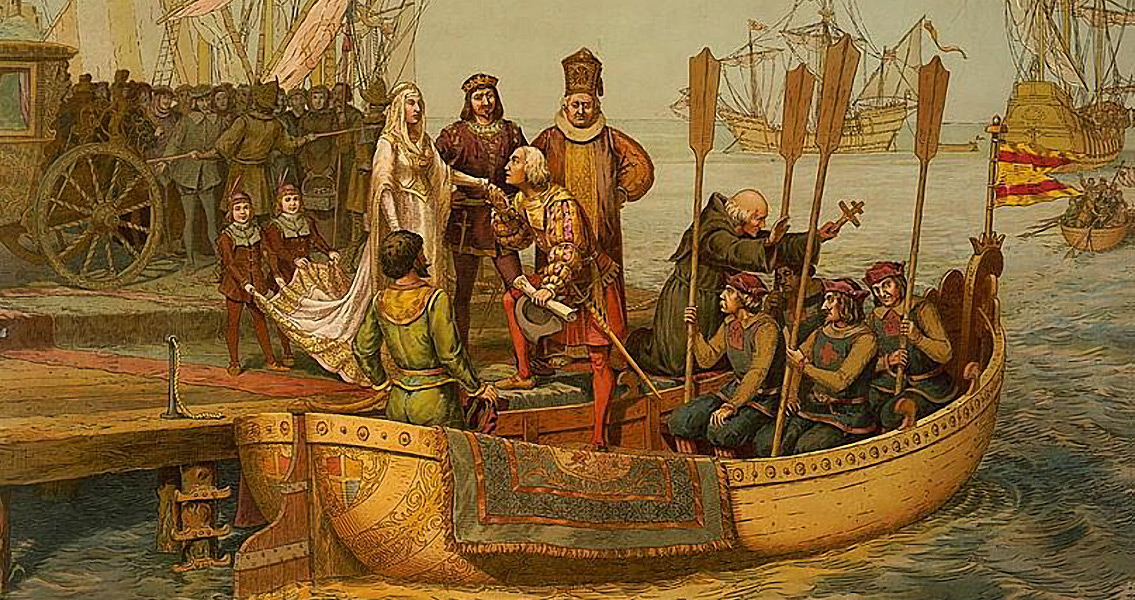<![CDATA[On 3rd August, 1492, Christopher Columbus set sail from Spain, embarking on a journey which resulted in him landing in the Bahamas and becoming the first European to set foot in the Americas since the Viking age. Details of Columbus' early life are still somewhat shrouded in mystery. The majority of historians cite Columbus' own testament and archival documents to conclude that he was born in Genoa to a Christian family. His father, Domenico Colombo, was a merchant and wool worker. Some have claimed that Columbus was in fact born in Spain or Portugal, or that he came from a Jewish family and converted to Christianity in his adulthood. Columbus' career as a seafarer started in his twenties, when he joined the Portuguese merchant marine. He worked in Lisbon as a chart maker, developing his interest in, and understanding of, the science behind navigation. These academic pursuits were accompanied by a desire to gain practical sea faring experience, and throughout the 1470s he embarked on voyages with the merchant marine to the likes of Iceland, Ireland and Africa. In 1484 Columbus began seeking support for a cross Atlantic voyage. Through studying the Atlantic currents and winds on his voyages on Portuguese merchant ships, Columbus had come up with a plan to cross the Atlantic from Western Europe. Contrary to common belief, most scholars in this period were well aware that the earth was not flat. However, the exact size of the planet had typically been underestimated, and maps from the period show that most cartographers assumed that crossing the Atlantic from Europe would lead to East Asia. Columbus had speculated that the earth was a sphere, although he had misjudged the size, estimating the planet to only be 63% of its actual dimensions. Based on this reasoning, he assumed the distance between the Canary Islands and Japan to be around 2,300 miles. Columbus views contradicted the majority of scholars from the time, who stuck to calculations made in the second century BCE that the earth's circumference was 25,000 miles, and the distance from the Canary Islands to Japan 12,200 miles. For years Columbus struggled to win backing for his voyage. The Portuguese king refused to give Columbus the resources he needed, and subsequent appeals to the leaders of Genoa and Venice were just as unsuccessful. His next approach was to the Spanish monarchy of Isabella of Castille, who also rejected Columbus' approach initially but kept him on a retainer in her court, revealing the idea had captured her imagination. Columbus continued to lobby Isabella's court to support his voyage, but the Spanish were distracted by a long running war with the Muslims occupying sections of the country. Finally, following the capture of the last Muslim stronghold at Granada, the Spanish monarchy backed Columbus exhibition at the start of 1492. By this point the expanding Ottoman Empire had made travel to the East exceedingly difficult. A likely motivation for the Spanish support of Columbus' expedition was to gain a head start on the other European powers by opening up a trans-Atlantic trade route with the Far East, allowing access to vital commodities such as herbs and spices. Three ships, the Nina, Pita and Santa Maria set off on the initial expedition from Spain. On 12th October, they made land on what are now known as the Bahamas. The expedition had not reached Asia as expected, but instead reached what came to be known as the New World. Columbus has been immortalised for the voyage he embarked upon on 3rd August, 1492, a journey whose consequences have made it a defining moment in history. Almost immediately Europeans began to exploit the resources of North and South America, fueling imperialism and conflict. For the indigenous people of the Americas, the arrival of Europeans signaled the start of centuries of horror, as forced cultural assimilation, the spread of foreign diseases and brutal oppression caused their populations to plummet. ]]>
Columbus Departs From Spain
